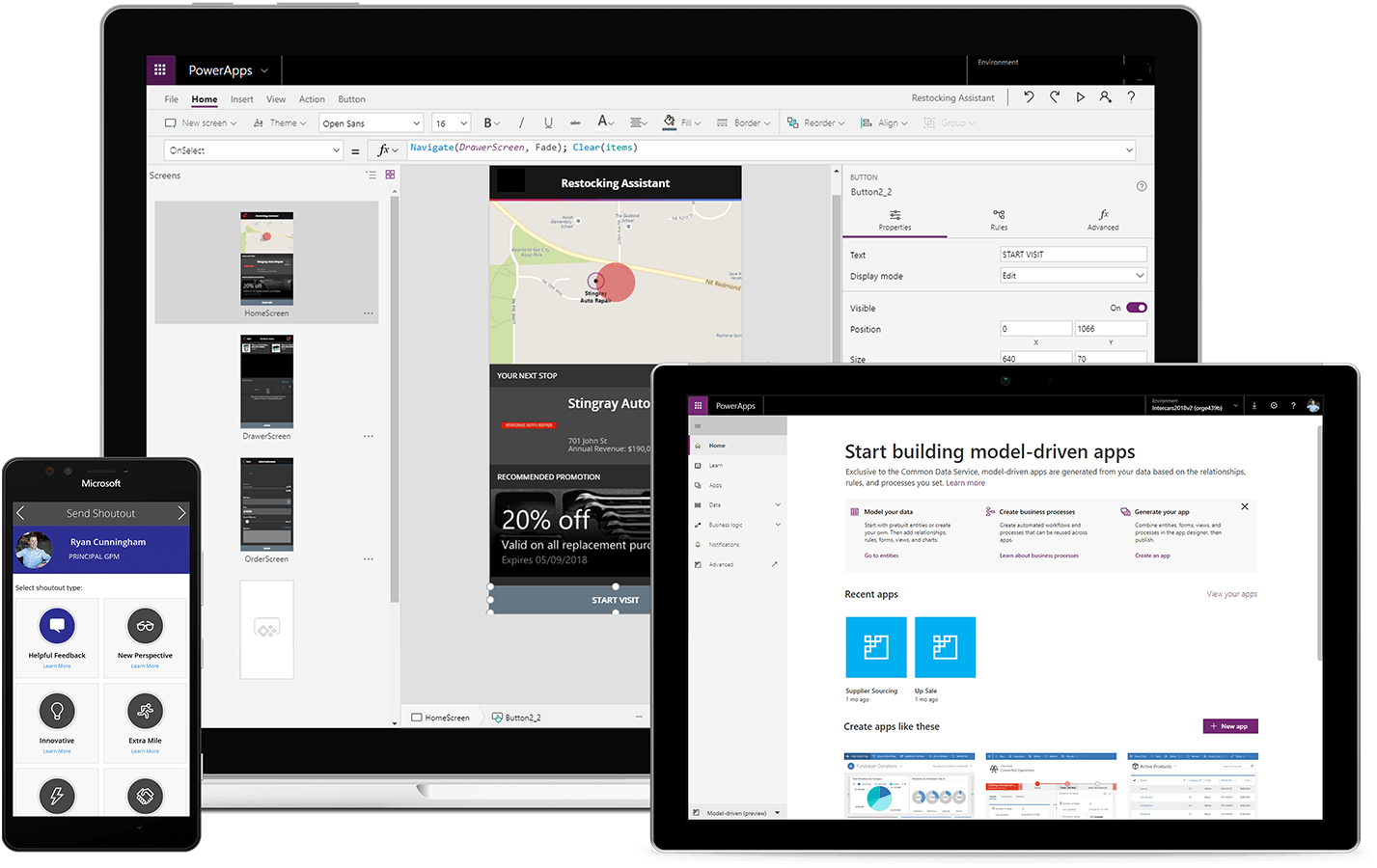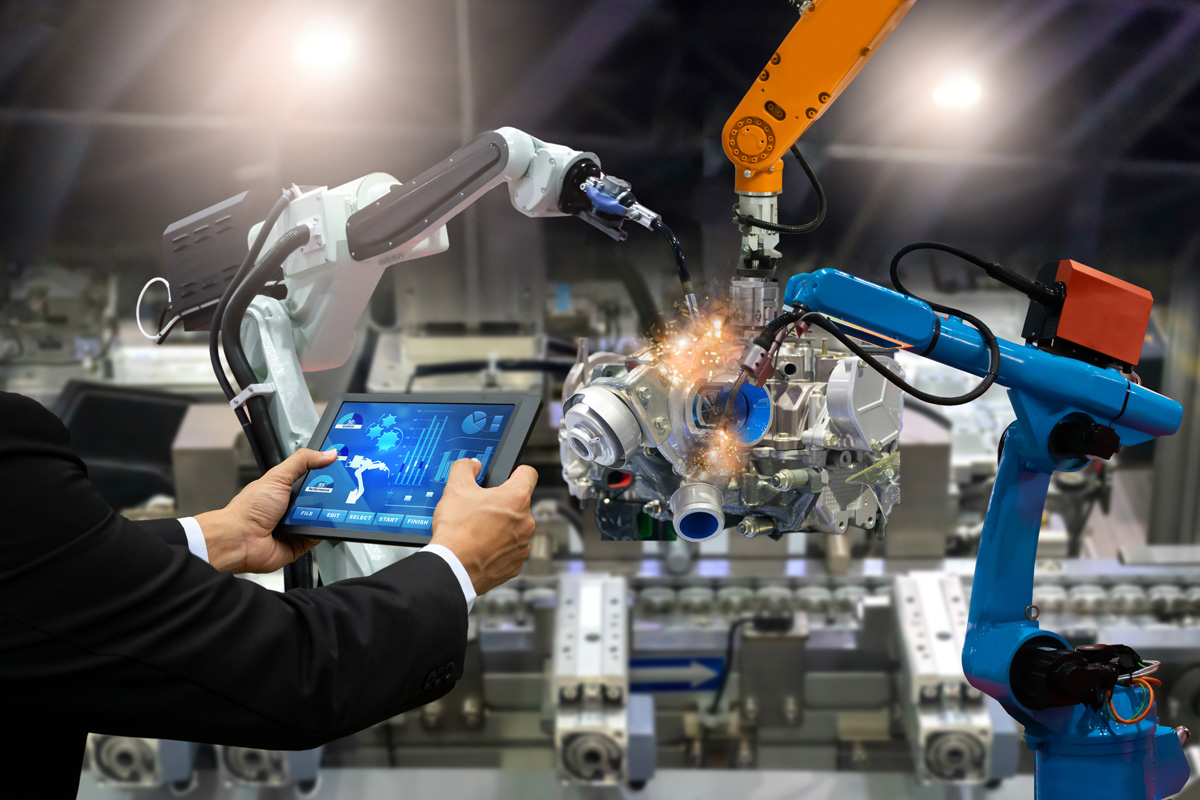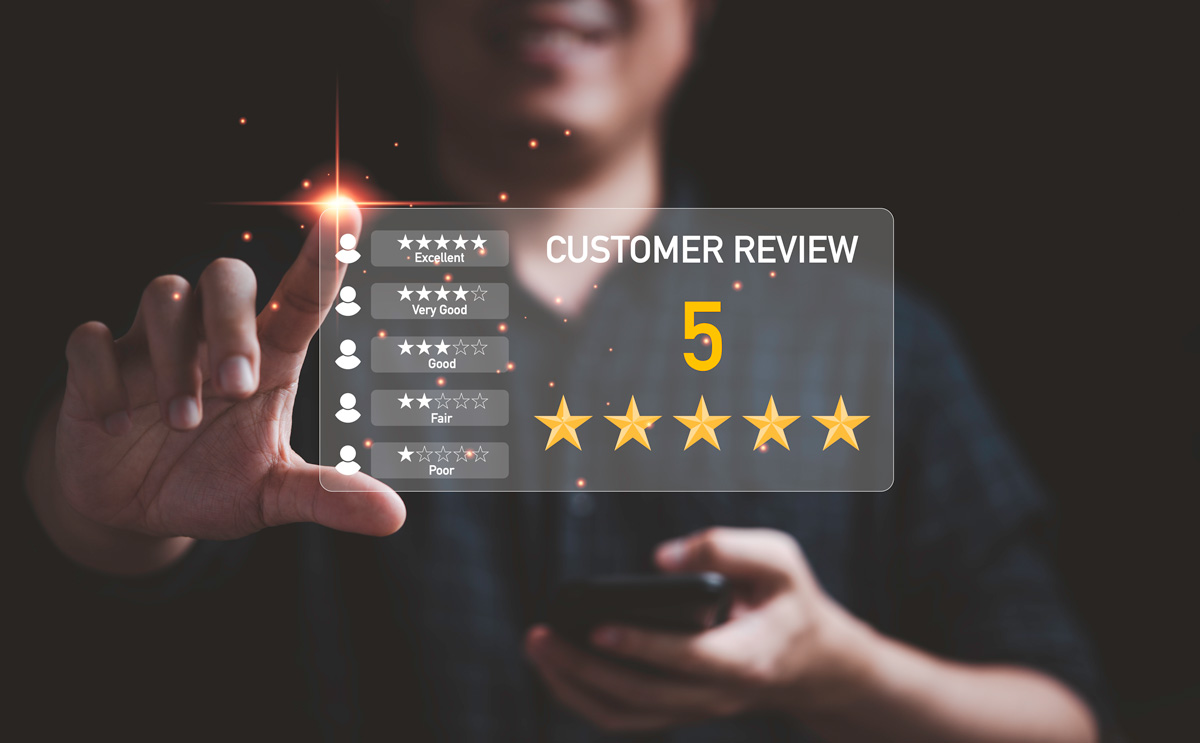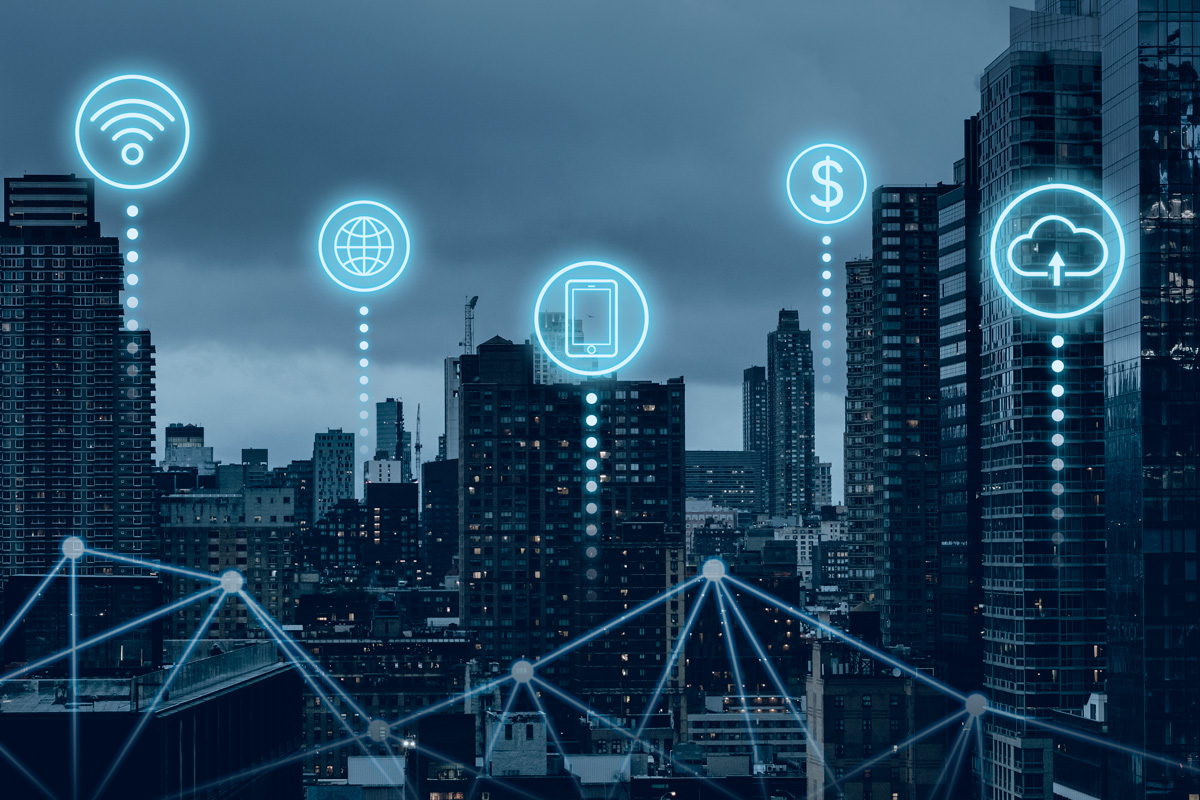It’s the year 2023—a world of the everchanging digital landscape where companies are aggressively implementing and leveraging unconventional and disruptive business technologies like mobile, cloud, artificial intelligence, and social media rather than relying on legacy systems.
And, as the year 2022 has ended, we are starting to get a clear picture of many more technological breakthroughs and trends that are gaining solid momentum within the domain of digital transformation and DevOps technologies. With the kind of game-changing innovations and transformations that are taking place in business technologies right now, the ways companies do business will drastically change not just for the rest of 2023 but also for the next few years to come.
Understanding and following various digital trends will not only help you adapt and leverage the changing market around you but also future-proof your organisation against rapidly changing business technologies for years to come. Some of the other trends that seem to be making their marks are things like confidential computing, artificial intelligence and machine learning, hybrid work model and human capital management, blockchains and NFTs, predictive analytics and hyperautomation. The more you know about the new technologies and systems, the more clarity you have when making investments in business enablement solutions and the more able you are to achieve key your business priorities.
After all, what is more beneficial than being able to precisely predict future business trends and identify all the factors that will shape your business environment? So, here are the top 10 digital transformation trends that you should be looking forward to and perhaps think about adopting in 2023.
1. Cloud Technology
If there is one thing that is definitely going to dominate the business technology landscape in 2023, it is cloud technology. Compared to traditional on-premise data centres, cloud services come with a whole bunch of benefits for businesses today that allow them to be on the winning side.

Using the cloud-based system, you and your team can remotely record and access necessary data or information at anytime from anywhere in the world into the main database. What it means is that your team can perform their tasks and collaborate more efficiently without having to constantly travel, thereby, saving on business expenses. Plus, once you switch to cloud technology, you will no longer have to spend on your on-premise IT infrastructure, thus, saving you more money.
Additionally, cloud services are more secure against cyberattacks and other IT risks compared to conventional systems. They even have safeguards against natural disasters so all your valuable business data remains safe in remote servers. Besides, these disaster recovery and loss prevention mechanisms, you also get automatic system updates with cloud technology. Moreover, you can get added benefits like flexibility, scalability, mobility and broader visibility. Leveraging these advantages, you can ensure quality control, gain a competitive edge and, thereby, sustain your business for many years to come.
- $1251.09 billion is the expected 2028 market size of cloud computing.
- 62.70% of businesses prefer cloud-based solutions.
2. The Hybrid Work Model and Human Capital Management
It is hard to ignore the changing dynamics of human resources and organisational workflows in recent years with the pandemic drastically changing business processes and workflows of the people. When you have a widely distributed workforce working remotely from the safety of their home they are bound to rely on an array of digital apps and tools to perform their tasks and to communicate and collaborate with peers. This means you have to now account for a whole new set of digital variables in order to ensure the operational continuity. Which is why you need to have a reliable and efficient system to adapt to the new hybrid work model and also manage your human capital.
a) The Hybrid Work Model
Although the concept of a remote workforce is not new—with BPOs and overseas manufacturing facilities already making up for a larger portion of the world economy—the idea of a hybrid workforce surely is.
Using digital technology, the hybrid work model allows businesses to adopt a flexible and agile approach in accommodating both remote and on-premise workforces. Businesses have realised that this new work model allows them to focus more on creating immediate value for their employees.

For instance, employees can choose to work when they are most focused and productive. Some may like to work in the mornings, others may prefer afternoons or evenings. The hybrid model accounts for that and makes it possible for businesses to function as usual even with the varying working hours and location of their workforce.
What’s more, since the introduction of this hybrid work concept, a comprehensive industry research has reported that over 54% of the employees who work remotely reported that they would ideally prefer to split their time between working at home and in the office.
And considering the recent COVID crisis and the potential for the occurrence of similar or worse pandemics, it is safe to say that this hybrid model is here to stay.
- 66% of industry leaders are considering redesigning their workplace for hybrid work, according to a report by Microsoft.
- 83% of workers prefer a hybrid work model, but several factors influence their productivity, whether they’re on-premise or elsewhere.
b) Human Capital Management
The implications of the dispersed workforce and the subsequent hybrid work model have necessitated even more emphasis on finding new and efficient human capital management technologies.

On one hand, people have to adapt to tougher remote work arrangement and on the other, they are worried about their health. What they need at instances like this is a sense of being valued and appreciated for their contribution, along with sincere support from their managers. If you are not able to do that you are, you are more likely to experience a higher turnover.
So, in 2023, expect more growth and improvements in human capital management technologies that not only motivate and engage employees but also come with new upgrades and features that allow you to transform employee experiences, optimise HR programs, increase organisation agility and discover workforce insights. In addition to all of that, you can also align employee performance goals with your business outcomes no matter where people are working from.
- 72% of employees are stressed about their finances and would prefer another employer who can demonstrate how they care about the financial well-being of their employees.
- 62% of workers reported well-being benefits as key factors in deciding whether to apply for a new job.
3. Hyperautomation
Another interesting digital trend that you can expect big enterprises to jump on is hyperautomation. It seeks to automate most of your business processes and IT procedures. From data gathering and sharing to facilitating self-service for customers and everything else in between.
Harnessing the recent innovations in digital technology, industry leaders have already started adopting various ways to achieve hyperautomation to scale up and streamline their everyday business activities.
a) Low Code Platforms
Industry projections from Gartner indicate that low code applications and platforms will largely contribute to the development of over 65% of the apps by 2024. Low code systems require little coding expertise to build applications and come with easy to use “drag and drop” features. Additionally, they can also help integrate APIs quite easily.

Most importantly, these platforms facilitate business innovations without the need for professional developers. And this is precisely why they are going to get more popular among businesses in the next few years. Many organisations are already using low code platforms like Microsoft Power Apps and Sirius App to serve digital-savvy users, whether they’re customers or employees. With this piece of business technology, you will be able to deliver critical services and respond to diverse customer needs fairly quickly with your own customised apps and online tools.
- Over 65% of the apps will be based on low code platforms by 2024, according to Gartner.
- 75% of businesses are expected to adopt a mixture of low-code and no-code platforms by the end of this year, as per Forrester.
b) Robotic Process Automation
According to a recent Deloitte report, by 2023, 93% of businesses intend to use Robotic Process Automation (RPA) to upscale their business operations and returns.
RPA refers to the use of software “robots” to automate business processes and rule-based digital tasks that are driven by structured data. These virtual robots are designed to interact with data sources and apps just like human employees do, only much more quickly and reliably.

It can handle routine and repetitive tasks that are time and labour intensive, thereby, liberating expert staff to focus more on creative and productive tasks. This means, it can drastically lower expenses, help you quickly penetrate the market, maintain consistency in customer service, boost employee productivity, and also aid in scaling up your business by automating business processes from both the customer’s and employee’s ends.
- 93% of businesses want to use RPA by 2023, according to Deloitte report.
- 78% of leaders have already implemented this technology, based on the same report.
c) Intelligent Process Automation
Intelligent Process Automation (IPA) is yet another set of business technologies that is quickly making its way into 2023. What it essentially does is bring together AI and RPA to add advanced cognitive intelligence of AI to the high level of process automation that comes with RPA.
Typically, RPA can perform routine tasks faster and better than people but it lacks the ability to learn and improve over time. That’s where IPA comes in. It complements the powerful automation capabilities of RPA by making the latter smarter and more flexible. IPA essentially enables software robots to learn from their performance over time and improve their speed, accuracy and productivity.

IPA is actually powered by a combination of computer vision, cognitive automation and machine learning technologies that, when mixed with RPA, can organise and digitise your end-to-end business processes including the customer journey. With IPA technology, you can:
- Interpret, identify and classify visual information like physical documents, photos or videos with higher accuracy using computer vision-based o AI-enabled digital cameras and deep learning models.
- Discover and interpret hidden patterns in structured data, and continuously improves it’s reporting using machine learning (ML).
- Use Natural Language Processing (NLP) enabled apps, chatbots and virtual assistants to understand and interpret natural language in written or spoken form and even manipulate it.
- Learn and generate natural language to communicate back to users and perform complex tasks based on voice commands leveraging cognitive agents that are virtual tools that combine ML and NLP.
- Automate business processes and customer journey without the need for human intervention using virtual robots and system bots.
- 45% of human resource departments have already started focusing on intelligent process automation.
- 70%of businesses believe that an automation solution is necessary to build more effective teams.
4. AI Technology and Machine Learning
A major part of the recent digital transformation strategies in 2023 has been AI-enabled technology and Machine Learning (ML). A 2021 survey suggests that almost 76% of organisations have highly prioritised AI and ML compared to the other IT solutions.

You can expect your competitors to make investments in AI and ML at an increasing rate, thanks to the wide range of competitive advantages these business technologies bring with them. For starters, you have a great opportunity to automate most of your business processes and improve productivity. This can save you a lot of legwork, time and cost across all your departments and processes.
And as AI and ML get integrated into the top business enablement software, businesses can enjoy superior capabilities like pattern recognition, customer sentiment analysis, natural language processing, personalised customer experience, and accurate forecasting and simulations. These technologies act like catalysts that augment every business process that they touch.
But that is not all. Not only will you be able to boost your overall organisational productivity with AI and ML, but you will also add a solid competitive advantage to your business, as you will save on costs as well as future-proof your business.
- 3 out of 4 or 73% of executives confirmed that they have intelligent automation initiatives related to AI and ML in place
- 1 out of 2 or 56% of all companies are already using AI for at least one business function.
5. Transparent Privacy Policies and Confidential Computing
Digital consumers are growing increasingly concerned about privacy policies in recent times as more and more businesses try to digitise the way they interact with their customers. Since these digital interactions often require customers to give out their personal and financial details, it’s only natural for them to expect businesses to respect and protect their privacy against malicious events like cyberattacks or data theft.
And the only way for the companies to guarantee the protection of sensitive customer data and gain their trust is to create strict privacy policies and communicate that to their customers. Also using the business technology that actually has in-built provisions for transparency and data security can keep your consumers informed and make them feel less deceived, which greatly helps you earn the valuable trust and loyalty of your consumers.

Besides transparent privacy policies, businesses also need to secure their online communications with customers. And, a way to do that is confidential computing, which encrypts the entire communication process including data and information exchanged during customer interactions. This way, you can add another layer of protection to your client information. The best way to go about doing that is to subscribe to Microsoft Dynamics 365 or Salesforce. Both these business technology providers spend several millions of dollars annually on the research and optimisation of their system security so that even the new and unforeseen system vulnerabilities can be easily dealt with.
- 94% of businesses plan to invest in data security technologies to protect their data.
- A 17% increase in the number of data breaches was reported in 2021 than the previous year.
- 75% of the world population will have their personal data protected under modern privacy regulations by 2023.
6. Better Customer Experience

As social media evolves and the use of 5G technology becomes more common, businesses are going to increase their reliance on some of the highly underrated marketing and customer service tools such as automated chatbots, personalised direct messages, and paid advertising available on various social media platforms. After all, they have little choice since digitisation and universal access to the Internet are already starting to change the buying patterns of the people.
Brands will also most likely take advantage of social messaging apps to quickly and safely respond to customer queries since these platforms are very fast and highly encrypted. These apps also facilitate one-on-one conversations with customers. This not only allows you to personalise your customer interactions but also enables you to troubleshoot their issues quickly, which ultimately creates a great buying experience for your customers and elevates your brand impression.
So, expect to see your daily physical customer interactions shift towards these digital social platforms in 2023 and do not miss out on this wonderful opportunity to reach out to and engage with more prospective buyers online.
- A satisfied customer is 14 times more likely to make a new purchase as compared to a new customer.
- 52% of customers are extremely or somewhat likely to switch brands if the communication and customer interactions are not personalised, according to Salesforce.
7. Total Experience
To further enhance customer service standards along with employee experience, experts are pioneering the idea of total experience (TX). A recent study by Gartner indicates that 60% of large organisations will use total experience by 2026 to transform their business models to achieve world-class customer and employee advocacy levels.
The concept of TX combines three key elements that go into improving brand image and providing excellent customer service as well as employee experience at a holistic level. These key elements are User Experience (UX), Customer Experience (CX), and Employee Experience (EX).
So far, UX, CX and EX were viewed as separate disciplines but a unified total experience will combine the critical elements of all three to add a unique competitive advantage to your business in 2023 where both your customers and employees are dispersed and, thus, interact digitally. TX allows you to attract both customers and skilled employees from widely distributed locations as well as meet their expectations. This is particularly mission-critical for businesses as the concept of the remote workforce and the hybrid work model are in play in recent times due to the pandemic. As the TX evolves, you can expect to see even more disruptive apps and digital tools that promptly resolve the pain points of both customers and employees, thereby, securing generous profits as well as top talents for your business.
- 60% of large organisations will use TX by 2026 to achieve world-class customer and employee advocacy levels, according to Gartner.
- Organisations that provide TX will outperform their competitors by 25% in both CX and EX satisfaction metrics.
8. Data Fabric
Traditional data management systems, with their high-cost and low-return data integration cycles, and delays in data sharing, do not allow you to harness the full potential of your company data in a progressively diverse, decentralised and competitive business landscape. But that might soon be changing with data fabric, which is a new design concept or software architecture that integrates business data and connecting processes into a unified layer or fabric so that you can provide consistent data capabilities across all your hybrid multi-cloud platforms.

What it really does is identify and integrate data from different applications and sources into a unified architecture to discover unique patterns and relationships through continuous analysis of existing data and business processes. This can be incredibly beneficial to your business, as you are able to readily design, deploy and use the consolidated data and their interpretations across all your platforms. On top of that, you can also quickly access new business insights for a more informed decision making that optimises the returns. All this was beyond the capabilities of traditional data management systems but with the data fabric technology, you can better focus on your core tasks while the system makes data discoveries, analytics and inferences on the back end. What validates the relevance of data fabric, even more, is the fact that the industry research shows that by 2026, the worldwide market size for data fabric is expected to reach a valuation of USD 4.2 billion.
- Gartner estimates that the use of data fabric technology has led to significant time savings for businesses—30% for integration design, 30% for deployment, and 70% for maintenance.
- The global data fabric market is expected to grow from USD 1.71 billion in 2022 to USD 6.97 billion by 2029, with a CAGR of 22.3%.
9. Predictive Analytics
This is as the name suggests an advanced version of data analytics that is quickly turning out to be a mission-critical technology for business in 2023. While conventional analytics answers “What happened in the past?” and “What’s happening at the present?”, predictive analytics answers “What will happen in the future?”. Using AI-based algorithms and machine learning, it can extract data and make future projections for a range of business functions from marketing and human resource to manufacturing and customer service.

Predictive analytics can predict future buying trends, shifts in consumer behavioural patterns, changes in the target market, staffing and logistics requirements, fluctuations in cash flows, and much more with great precision. Financial, manufacturing and health institutions are already catching up to predictive analytics to enhance productivity, better understand customer behaviour and interactions, identify and target new markets and revenue opportunities, personalise products and services, and discover potential problems in the future. So, why not adopt this trend and leverage its forecasts and future insights to strategise your future business decisions.
- The global predictive analytics market is growing at a CAGR of 24.5% and businesses are expected to spend $22.1 billion on this market by the end of 2026
- Increasing industrialisation and technological innovations along with the emergence of Big Data are the key drivers of predictive analytics. But, the lack of skilled human resources in IT and the high cost of implementation are the factors limiting the market growth of predictive analytics.
10. Blockchain Technology, NFTs, Social Media, the Metaverse, and 5G and IoT
Social media is no new concept but social media marketing and associated marketing tools sure are. The ever-changing dynamics of social media algorithms and their potential marketing capabilities are something to watch closely as is the developments in blockchain technology, the rise and profitability of the NFTs, 5G mobile network, and quite interestingly the advent of commercialised virtual reality in the form of Facebook’s Metaverse platform.
Although they are evolving technologies, the way they are creating disruptions in conventional ways of doing business suggests that more and more enterprises will be attracted to these sets of technologies for their effective communication, high engagement rate and formidable security standards. Here’s a comprehensive breakdown of these technologies.
a) Blockchain Technology

Although blockchain technology is perceived to be closely related to cryptocurrencies like Bitcoin and Ethereum, it can have several uses for businesses. Using immutable records in blockchain technology, organisations can greatly enhance their data security, handle complex supply chains, manage transactions and collaborate with partners.
- 96% of financial service experts accept that blockchain has reached mainstream adoption.
- 52% of experts believe blockchain will be essential for customer identity verification in the future.
b) NFTs
Non-fungible tokens (NFTs) are a fairly new concept that just took off in 2021. They are unique digital collectables that may be bought, sold or hoarded like any other physical assets. Currently, NFTs are primarily attached to the digital art industry, but soon they may find a credible place in other industries like virtual real estate, stocks and bonds and highly creative content. The benefits include ultra-secure business operations, smart and secure contracts, immutable digital ownerships of products and services, and much more in terms of identifying digital transactions and copyrights, all of which could be highly advantageous for your business.
- The NFT market is now worth more than $40 billion and rising.
- The NFT sales grew by 131 times between 2020 and 2021.
c) Social Media
Over the past decade, social media has evolved from just a hub for casual online interactions for average people to strong marketing and advertising platform for commercial brands. And, why not? Owing to the increasing massive user base and the ease with which brands can engage and convert potential customers, social media has already stood far apart from the traditional marketing channels.

This year, many social media platforms will either tweak their existing algorithms or add new features to allow content creators to make even stronger and more engaging content. Short-form video content, in particular, is fast becoming more popular so brands can leverage platforms like Instagram, TikTok and YouTube to connect with their customers and possibly build a community of loyal fans.
Apart from possibilities for a bigger, quicker marketing impact, businesses can also take advantage of some of the most underrated and overlooked social media features, like Stories on Facebook and Instagram, Reels and Carousels in Instagram, to improve customer service and manage relationships with both the existing and potential buyers.
- There are 3.96 billion total social media users across all platforms, as of January 2022.
- TikTok is the fastest-growing social network with a staggering 105% user growth rate over the past two years.
- Facebook is the most-used platform by marketers worldwide (93%) with approximately 10 million active advertisers.
d) The Metaverse
Facebook is soon taking things to the next level by combining the idea of social interaction and business. After its historic rebranding to “Meta”, the popular social media platform is aggressively pursuing the possibilities of virtual and augmented reality for its public and corporate accounts.

Users may soon be able to fully access and utilise this shared virtual space using VR sets, AR glasses or smartphones. It is a boon for creative content marketers as they will be able to create not just innovative 3D content but an entirely unique virtual environment where they can promote and sell their products and services in a way that has never been attempted before. They will also be able to monetise their content and conduct transactions on the same platform using cryptocurrencies that rely on blockchain technology. And, since this content of Metaverse has been backed by some of the major companies like Addidas, Puma, Nike, Prada, Gucci, Microsoft, and many more, the future looks bright and prosperous for the Metaverse.
- Metaverse is one of the top five emerging trends and technologies for 2022, according to Gartner.
- Worldwide spending on VR/AR, the metaverse’s foundation technologies, is expected to rise from $12 billion in 2020 to $72.8 billion in 2024.
e) 5G and IoT
The fifth-generation mobile internet technology named 5G comes with multiple improvements over the existing 4G network. With multi-peak data speeds, faster connectivity, low latency, enhanced user experience, and improved network bandwidth, the 5G mobile technology allows high-speed data transfer even for multi-gigabyte data. What this means is that it supports the implementation of virtual networks, and allows for seamless connectivity across a huge number of devices.

The additional benefits of the 5G technology combined with IOT, and the additional possibilities for ground-breaking innovations that come with it are:
- Use of Artificial Intelligence for automated and unmanned inspections and supervisions with drones and video monitoring systems.
- Management of and coordination with remote workforce across several industries like education, health care, IT, nonprofits, and plenty more.
- Bi-directional communication and large data storage capacity with 5G-enabled automobiles using high speed and low latency of 5G.
- Enhanced customer service due to easy and accurate tracking of shipments and delivery timelines.
- Global System for Mobile communications Association (GSMA) expects 5G connections to grow from 10 million in 2019 to 1.8 billion by 2025.
- Gartner predicted that users and businesses will spend $4.2 billion on 5G wireless network infrastructure worldwide in 2020.


